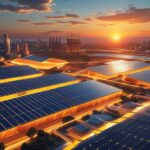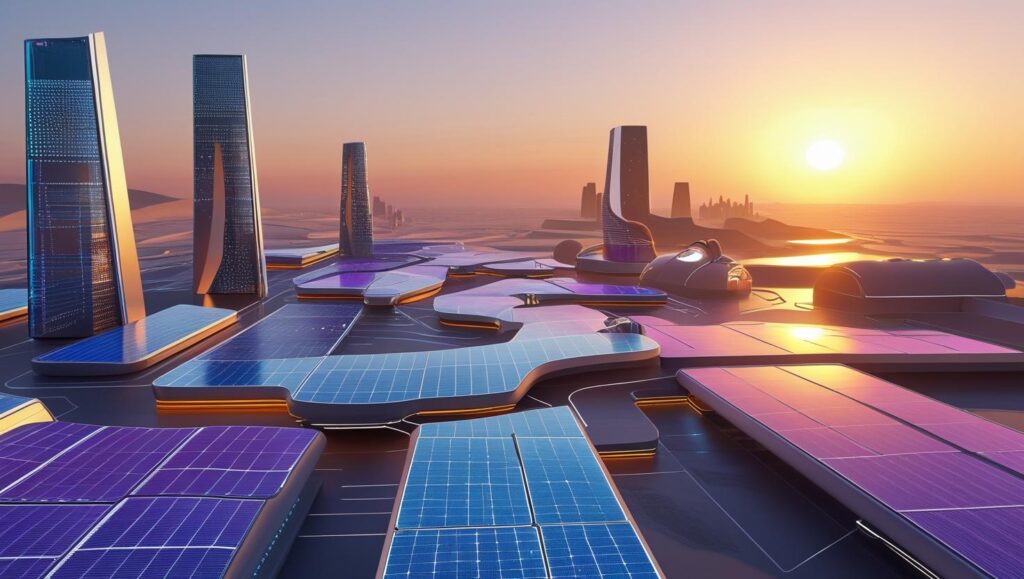The Future of Solar Technology: What’s Next for Sustainable Power?
The sun, a constant and powerful source of energy, has long been a beacon for sustainable innovation. For decades, solar panels have transformed this light into electricity, making strides in the renewable energy sector. However, what we’ve seen so far is just the beginning. The **future of solar technology** is poised for a revolutionary leap, moving beyond the traditional rooftop panels we’ve all come to recognize. From groundbreaking materials to smarter integration, the next wave of solar innovations promises to make clean energy more accessible, efficient, and versatile than ever before. This article delves into the exciting developments on the horizon, exploring how solar power will soon reshape our homes, cities, and energy grids. Get ready to discover the technologies that will define our sustainable future.
Enhancing Efficiency: The Quest for More Power from Every Ray
A central theme in solar research is the relentless pursuit of higher efficiency. Current silicon-based panels have reached a plateau, but scientists are developing new materials and designs to push past these limits. This drive for efficiency is crucial for making solar a more viable and space-efficient power source globally.
Perovskite Solar Cells: The Next-Gen Material
Perovskite is a mineral with a crystal structure that makes it incredibly effective at absorbing sunlight. While traditional silicon cells have a theoretical efficiency limit of around 29%, perovskite cells have already shown promising results, with lab efficiencies approaching this mark. What makes them so exciting is their potential for lower manufacturing costs and flexibility.
We might soon see perovskite cells integrated into flexible films that can be applied to windows, vehicle bodies, and even clothing.
Tandem Solar Cells: Stacking for Success
Why use one material when you can use two? Tandem solar cells combine layers of different materials, such as a perovskite layer on top of a silicon one. Each layer is tuned to capture a different part of the solar spectrum—for example, the perovskite layer absorbs blue and green light, while the silicon layer captures red and infrared light. This “stacking” approach allows the cell to utilize more of the available light, significantly boosting overall efficiency. This technology could push efficiency levels to over 35%, making every square meter of a solar panel produce significantly more power.
Integration and Aesthetics: Solar’s Seamless Future
One of the biggest hurdles for solar adoption is often aesthetics and space. The future of solar addresses this by making panels less intrusive and more a part of our daily environment. The goal is to move beyond mere energy generation and into a world where solar is an integrated component of architecture and infrastructure.
Building-Integrated Photovoltaics (BIPV)
Imagine buildings that generate their own power. BIPV technology embeds solar cells directly into building materials like roof tiles, facades, and windows. This not only makes buildings more energy-independent but also eliminates the need for bulky, rooftop-mounted panels. Tesla’s Solar Roof tiles are a great example of this, offering a sleek, durable alternative that looks just like traditional roofing while producing power.

Solar Paint and Transparent Solar Cells
The ultimate in seamless integration, solar paint, or “quantum dot solar cells,” could allow us to paint any surface to produce electricity. While still in early research stages, this technology has the potential to turn every wall, fence, and road surface into a power generator. Similarly, transparent solar cells are being developed to turn windows into power sources without obstructing the view. This would enable skyscrapers to become vertical power plants, harnessing sunlight from all sides.
Smart Energy Management and Storage
Generating power is only half the battle; managing and storing it efficiently is the other. The **future of solar technology** is inextricably linked with advancements in energy storage and smart grid systems. These technologies ensure that the power generated during the day can be used at night or on cloudy days, making solar a truly reliable energy source.
Next-Gen Battery Technology
Lithium-ion batteries have been the standard, but their limitations are driving innovation. Researchers are developing solid-state batteries, which are safer and have a higher energy density, and flow batteries, which are ideal for large-scale, long-duration storage. These advancements will make home battery storage more affordable and efficient, allowing homeowners to truly go off-grid.
The Rise of the Smart Grid
Future solar systems won’t operate in isolation. They will be part of an interconnected, intelligent grid. Smart grids use AI and machine learning to forecast energy needs, balance supply and demand, and manage energy flow from various sources, including solar farms and individual rooftop panels. This creates a decentralized energy system, where consumers can become “prosumers,” both producing and consuming electricity. This transition will be a cornerstone of a resilient and sustainable energy infrastructure.
Global Impact and Accessibility
As solar technology becomes more efficient and affordable, its global impact will be profound, particularly in developing nations where access to electricity is limited. The future will see solar power playing a crucial role in creating energy independence and fostering economic growth worldwide.
Key Trends in Solar Technology
The following table summarizes some of the key trends and their potential impact on the solar industry. As you can see, the shift is from simple generation to a holistic, integrated energy system.
| Innovation | Description | Potential Impact |
|---|---|---|
| Perovskite Cells | Flexible, low-cost, high-efficiency material. | Lower cost per watt, more versatile applications. |
| Tandem Cells | Stacking different materials to capture more light. | Significantly higher efficiency than single-junction cells. |
| BIPV | Solar cells integrated into building materials. | Aesthetic appeal, eliminates separate installation. |
| Transparent Solar | Solar cells that are transparent and can be used on windows. | Creates energy from previously unused surfaces. |
| Advanced Batteries | Next-generation energy storage (solid-state, flow). | Safer, more efficient, and longer-lasting storage. |
| Smart Grids | Intelligent, decentralized energy management systems. | More resilient and efficient power distribution. |
Solar’s Role in a Decentralized World
The move toward decentralized energy systems is a significant shift from the traditional model of large, centralized power plants. Solar technology, particularly with the rise of distributed systems like rooftop solar and community solar projects, is at the forefront of this change. It empowers individuals and communities to control their own energy production, reducing reliance on fossil fuels and vulnerable grid infrastructure. This democratization of energy is a powerful force for global development.
Overcoming Challenges and Looking Ahead
While the outlook for the **future of solar technology** is overwhelmingly positive, there are still challenges to overcome. These include:
- **Manufacturing Scaling:** Scaling up production of new materials like perovskite requires significant investment and innovation to ensure they are durable and cost-effective for mass production.
- **Waste Management:** As older panels reach the end of their lifespan, we need better solutions for recycling and repurposing their components. The industry is actively working on creating a circular economy for solar technology.
- **Policy and Infrastructure:** Governments and utility companies need to adapt to this new, decentralized energy landscape, creating policies that support grid modernization and a fair market for solar producers.
Despite these hurdles, the momentum is undeniable. We are on the cusp of a new solar era, one where sunlight will not just power our homes but will be an integral part of our buildings, vehicles, and even our clothes. The fusion of material science, AI, and smart grid technology is creating a future where clean energy is not just an alternative, but the primary choice. We are moving towards a world where power is abundant, clean, and accessible to everyone. The **future of solar technology** isn’t just about better panels; it’s about building a smarter, more sustainable world for generations to come. For more information on how you can integrate these new technologies into your life and business, visit our resources page and start your transition to a cleaner energy future today!


